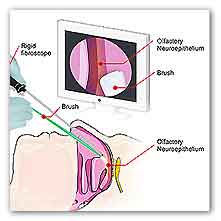News and Insights for
your best life. Online since 1998
- Home Health
- Breaking news
- In caso di...
- Per saperne di
più... - Medicina occidentale
- Medicine complementari
- Medicina cinese
e agopuntura - Omeopatia
- Fitoterapia

The bad one
At the beginning of 2014 July the AGERPRES National News Agency, Romania:
"Russia's federal veterinary and phytosanitary control authority (Rosselkhoznadzor) has banned imports of bovine cattle, beef and by-products from Romania over an outbreak of Bovine Spongiform Encephalopathy (BSE), commonly known as mad cow disease, the Russian ITAR-TASS reads."
According to a Rosselkhoznadzor release circulated on Tuesday, the ban is also applicable to processed animal proteins, animal feedstuff made of such proteins, meat-meal and bone tankage.
An outbreak of mad cow disease in Romania was registered by the International Epizootic Bureau, says ITAR TASS.
On the other hand, the Romanian national veterinary and sanitary authorities (ANSVSA) deny the above-mentioned information, stating that Russia does not import bovine cattle, beef and by-products from Romania, and that the 'epidemic' referred to is in fact an isolated, atypical BSE case which doesn't jeopardize the human health. Likewise, Romania has never registered the classic form of Bovine Spongiform Encephalopathy (BSE), the ANSVSA representatives informed.
At the beginning of June, Romania has received from the International Epizootic Bureau (IEB) a certificate by which it was recognized the status of country with BSE negligible risk.

Illustration of nasal brushing technique The test developed by NIH and Italian scientists involves the insertion of a rigid fiber-optic rhinoscope into the patient’s nasal cavity. A sterile brush is then inserted alongside the scope to collect olfactory neurons by gently rolling along the mucosal surface.
The good one
NIH and Italian scientists develop nasal test for human prion disease - Wednesday, August 6, 2014
A nasal brush test can rapidly and accurately diagnose Creutzfeldt-Jakob disease (CJD), an incurable and ultimately fatal neurodegenerative disorder, according to a study by National Institutes of Health (NIH) scientists and their Italian colleagues.
Up to now, a definitive CJD diagnosis required testing brain tissue obtained after death or by biopsy in living patients. The study describing the less invasive nasal test appears in the Aug. 7 issue of the New England Journal of Medicine.
CJD is a prion disease. These diseases originate when, for reasons not fully understood, normally harmless prion protein molecules become abnormal and gather in clusters. Prion diseases affect animals and people. Human prion diseases include variant, familial and sporadic CJD. The most common form, sporadic CJD, affects an estimated 1 in one million people annually worldwide. Other prion diseases include scrapie in sheep; chronic wasting disease in deer, elk and moose; and bovine spongiform encephalopathy (BSE), or mad cow disease, in cattle.. Scientists have associated the accumulation of these clusters with tissue damage that leaves sponge-like holes in the brain.
“This exciting advance, the culmination of decades of studies on prion diseases, markedly improves on available diagnostic tests for CJD that are less reliable, more difficult for patients to tolerate, and require more time to obtain results,” said Anthony S. Fauci, M.D., director of the National Institute of Allergy and Infectious Diseases (NIAID), a component of NIH. “With additional validation, this test has potential for use in clinical and agricultural settings.”
An easy-to-use diagnostic test would let doctors clearly differentiate prion diseases from other brain diseases, according to Byron Caughey, Ph.D., the lead NIAID scientist involved in the study. Although specific CJD treatments are not available, prospects for their development and effectiveness could be enhanced by early and accurate diagnoses.
Further, a test that identifies people with various forms of prion diseases could help to prevent the spread of prion diseases among and between species.
For instance, it is known that human prion diseases can be transmitted via medical procedures such as blood transfusions, transplants and the contamination of surgical instruments. People also have contracted variant CJD after exposure to BSE-infected cattle.
The NIAID study involved 31 nasal samples from patients with CJD and 43 nasal samples from patients who had other neurologic diseases or no neurologic disease at all. These samples were collected primarily by Gianluigi Zanusso, M.D., Ph.D., and colleagues at the University of Verona in Italy, who developed the technique of brushing the inside of the nose to collect olfactory neurons connected to the brain. Testing in Dr. Caughey’s lab in Montana then correctly identified 30 of the 31 CJD patients (97 percent sensitivity) and correctly showed negative results for all 43 of the non-CJD patients (100 percent specificity).
By comparison, tests using cerebral spinal fluid — currently used to detect sporadic CJD — were 77 percent sensitive and 100 percent specific, and the results took twice as long to obtain.
Jason Wilham, Ph.D., Christina Orrú, Ph.D., Dr. Caughey, and other members of his research group had previously developed the cerebral spinal fluid test method with Ryuichiro Atarashi, M.D., Ph.D., a former NIAID postdoctoral fellow who is now at Nagasaki University in Japan.
While continuing to validate the test method in CJD patients, Dr. Caughey’s group is looking to expand the study to diagnose forms of prion diseases in sheep, cattle and wildlife. The team continues to collaborate with Dr. Zanusso’s group, which is looking to replace the nasal brush with an even simpler swabbing approach.
For more information
http://www.agerpres.ro/english/2014/07/02/russia-bans-cattle-imports-from-romania-over-mad-cow-disease-outbreak-10-14-52
National Institute of Allergy and Infectious Diseases (NIAID)
National Institutes of Health (NIH)
Marco Dal Negro
del Dott. Turetta
Quali sono i problemi o le disfunzioni che possono giovarsi di un intervento omeopatico d'urgenza e, di conseguenza, come dovrebbe essere un ideale armadietto medicinale omeopatico casalingo.- Home -
- Health -
- Depressione -
- Sexuality
- Environment -
- Food -
- Musica -
- Capirsi -
- Grafologia -
- Ridere
Copyright © 1998/2018 www.mybestlife.com tutti i diritti sono riservati eccetto quelli già di altri proprietari.
.In caso di
Pubblicità
Per saperne di più su
Pubblicità
Pubblicità
Pubblicità
Pubblicità


